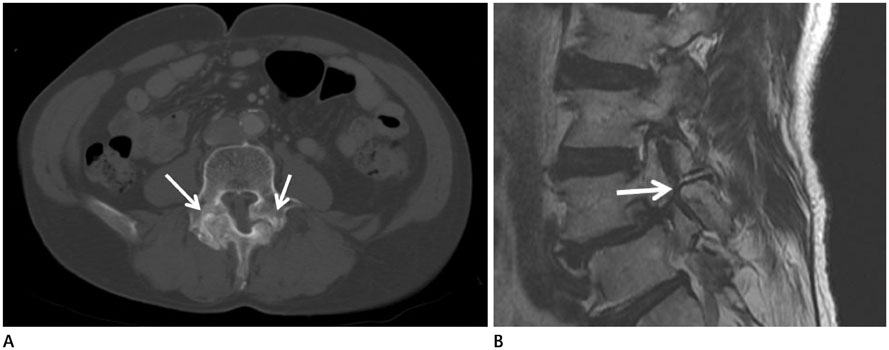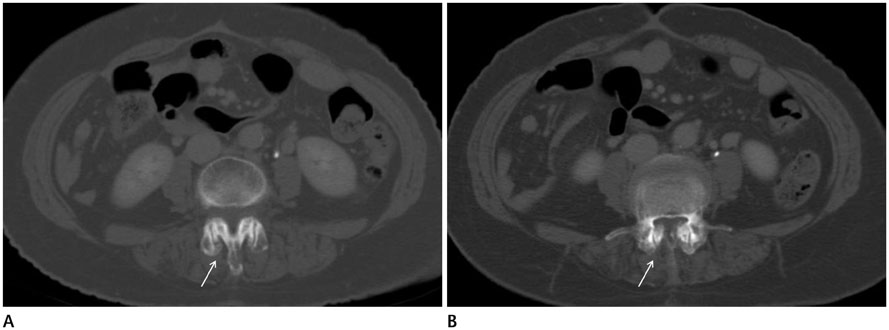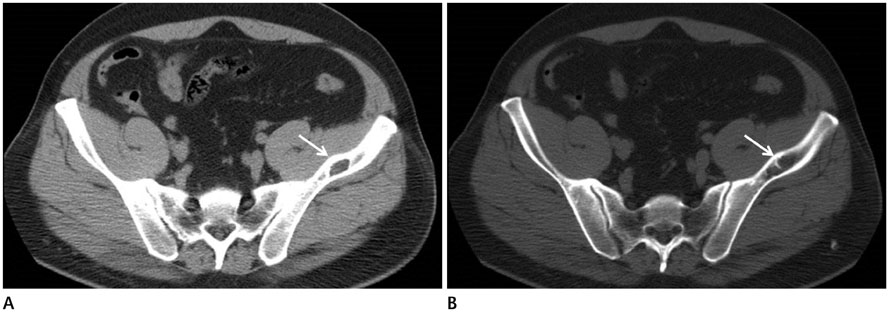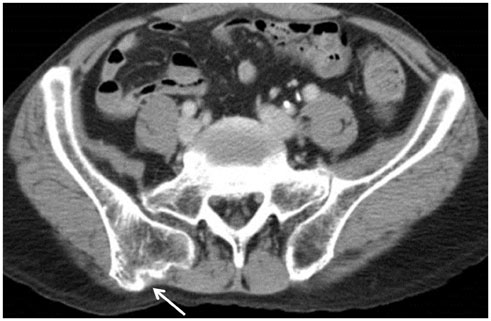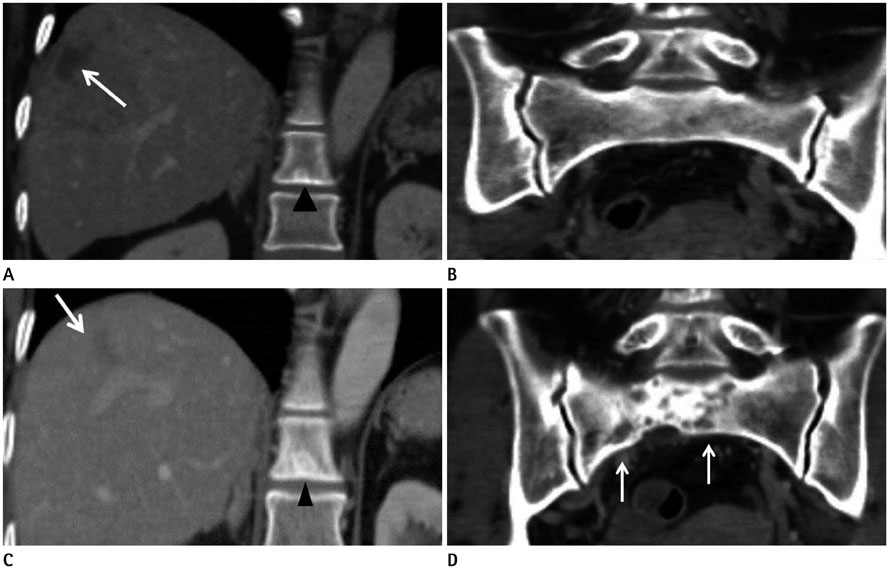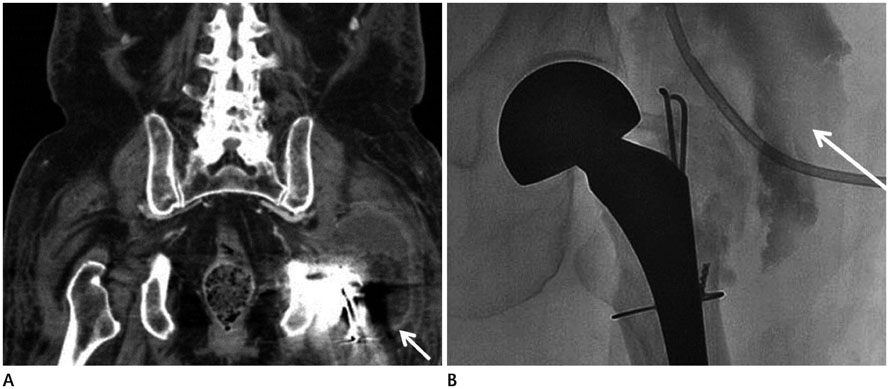J Korean Soc Radiol.
2015 Feb;72(2):115-122. 10.3348/jksr.2015.72.2.115.
Incidental Musculoskeletal Lesions Detected on Abdominopelvic CT Scans: A Pictorial Essay
- Affiliations
-
- 1Department of Radiology, Kyung Hee University Hospital, Seoul, Korea. t2star@hanmail.net
- 2Department of Radiology, Kyung Hee University Hospital at Gangdong Hospital, Seoul, Korea.
- KMID: 2002807
- DOI: http://doi.org/10.3348/jksr.2015.72.2.115
Abstract
- Various musculoskeletal findings incidentally detected on abdominopelvic computed tomography (CT) images have risen with the increasing use of abdominopelvic CT; however, it is not uncommon for radiologists to overlook the musculoskeletal system when they examine abdominopelvic CT images. Some musculoskeletal lesions may have more clinical significance than abdominopelvic lesions, although most lesions are of little to no significance. Many osseous lesions can be diagnosed using the bone window setting and reconstructed images. The purpose of this article was to review the wide variety of musculoskeletal lesions depicted on abdominopelvic CT images and to emphasize the use of the bone window setting.
Figure
Reference
-
1. Berland LL, Silverman SG, Gore RM, Mayo-Smith WW, Megibow AJ, Yee J, et al. Managing incidental findings on abdominal CT: white paper of the ACR incidental findings committee. J Am Coll Radiol. 2010; 7:754–773.2. Butt S, Saifuddin A. The imaging of lumbar spondylolisthesis. Clin Radiol. 2005; 60:533–546.3. Pourbagher A, Pourbagher MA, Karan B, Ozkoc G. MRI manifestations of soft-tissue haemangiomas and accompanying reactive bone changes. Br J Radiol. 2011; 84:1100–1108.4. Olsen KI, Stacy GS, Montag A. Soft-tissue cavernous hemangioma. Radiographics. 2004; 24:849–854.5. Campbell RS, Grainger AJ, Mangham DC, Beggs I, Teh J, Davies AM. Intraosseous lipoma: report of 35 new cases and a review of the literature. Skeletal Radiol. 2003; 32:209–222.6. Hain KS, Pickhardt PJ, Lubner MG, Menias CO, Bhalla S. Presacral masses: multimodality imaging of a multidisciplinary space. Radiographics. 2013; 33:1145–1167.7. Coleman RE, Rubens RD. The clinical course of bone metastases from breast cancer. Br J Cancer. 1987; 55:61–66.8. Malizos KN, Karantanas AH, Varitimidis SE, Dailiana ZH, Bargiotas K, Maris T. Osteonecrosis of the femoral head: etiology, imaging and treatment. Eur J Radiol. 2007; 63:16–28.
- Full Text Links
- Actions
-
Cited
- CITED
-
- Close
- Share
- Similar articles
-
- Musculoskeletal Applications of Elastography: a Pictorial Essay of Our Initial Experience
- RE: Musculoskeletal Applications of Elastography: a Pictorial Essay of Our Initial Experience
- CT Findings of Central Airway Lesions Causing Airway Stenosis-Visualization and Quantification: A Pictorial Essay
- Breast lesions during pregnancy and lactation: a pictorial essay
- Incidental Extramammary Findings on Preoperative Breast MRI in Breast Cancer Patients: A Pictorial Essay

